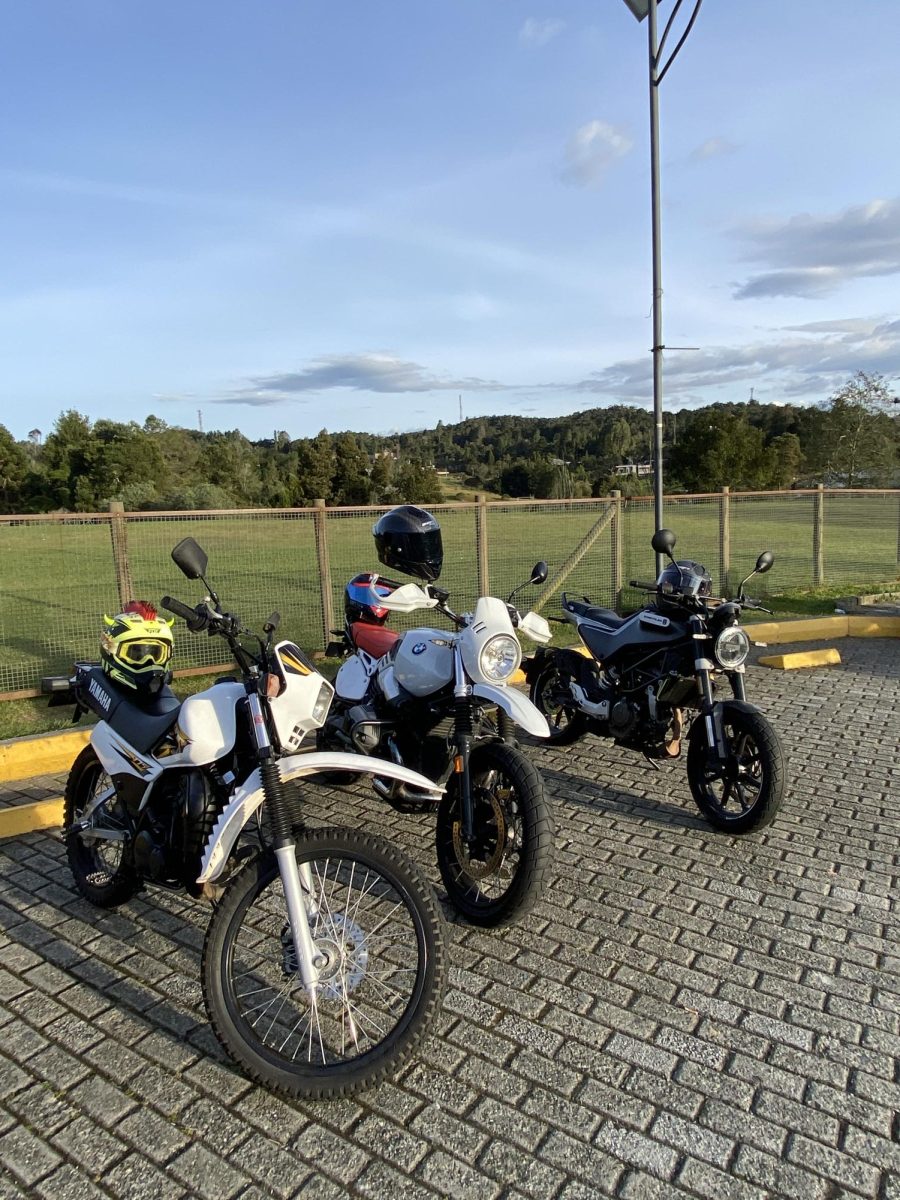It is common to see Estadero Frechibar, better known as “Fresas” by TCS students, filled with cars and serving more as a parking lot than an Estadero. Many prefer the comfort of their 4-wheel drive, but the growing traffic in Las Palmas and inflating gasoline prices have fueled a different behavior. While still in its early stages, there’s an increasing trend of students arriving at school on motorcycles. But what’s behind this shift? Fuel and time efficiency, convenience, easy parking, self-expression, and the thrill of the ride are reasons why students have shifted from 4 wheels to 2 wheels.
For students on a low budget looking for a personal vehicle, motorcycles offer a significant financial advantage. The initial purchase, maintenance, and replacement costs are significantly lower than a 4-wheel drive.
“Currently in Colombia, prices for a basic car like a Mazda 2 or a Nissan March ranges around 60 to 90 million pesos in Mercado Libre, while prices for a large displacement bike like a KTM 390 or a Husqvarna 401 ranges around 16 to 25 million pesos,” Senior Pedro Gómez, an experienced rider and owner of a Yamaha 125, said.
Additionally, motorcycles boast superior fuel efficiency, translating to lower gas expenses, especially for those living farther away from school. With gas prices steadily climbing in Colombia, filling the tank of a car has become expensive, especially for young adults on a tight budget. Motorcycles, however, can achieve double or even triple the fuel economy compared to many cars.
“I use my bike daily to go to the Gym and to school 3 days a week and usually fill the tank with 30 thousand pesos, which lasts around 2 weeks,” Senior Felipe Tamayo, rider of a KTM 390, said.
This economic benefit and annual savings from the school’s bus service cost around 500 thousand pesos/month/person. This translates to 5,000,000 pesos/person for the entire academic year, typically lasting around 10 months in Colombia.
“If I take care of my bike then there’s no need for reparations, however, I take it around 4 times a year for maintenance which costs vary from 200 to 600 mil, 600 being if there’s a worn out or damaged part to be changed,” Tamayo said. “It all depends on how scarce or pricy a motorcycle brand or bike is.”
Beyond practicality, motorcycles hold a unique appeal for many students. The open-air experience and the sense of independence and control associated with riding results are particularly appealing to those seeking excitement and exhilaration in their daily journeys.
“The adrenaline, the speed, the wind in your face, and the view of new landscapes gives a feeling of freedom and euphoria that it’s hard to get elsewhere,” Jeronimo Bernal, Grade 10, said.
Traffic congestion is a growing concern in Medellin, causing frustration and delays. Motorcycles have the convenience factor of their smaller size, allowing them to ride through the lanes, saving students time, and easy parking in tight spaces for a reduced cost, as is the case in Fresas.
“Many who go by car now have to wake up and leave their house earlier to have time to cross the 20-minute traffic en el Alto de Palmas and have where to park in Fresas,” Tamayo said.
For students, motorcycles are more than just a means of transportation. It is a method for self-expression, easily customized with accessories and parts that reflect individual styles.
Additionally, the growing community fosters a sense of shared passion and belonging. From participating in group rides, attending events, or simply connecting with other riders.
“Everyone drives a car, but not everyone dares to ride a motorcycle, and that differentiates you from others,” Gómez said.
The popularity of motorcycles is on the rise, particularly among younger generations. This cultural shift, fueled by the various practical and personal benefits they offer, is contributing to the growing number of students choosing motorcycles as their preferred mode of transportation. However, it is crucial to remember that safety is paramount. While these vehicles offer excitement and convenience, they also come with inherent risks. Students must prioritize responsible riding practices, wear appropriate safety gear, and be extra cautious navigating city streets. Only then can this exciting trend contribute to a vibrant and safe school environment for all.



